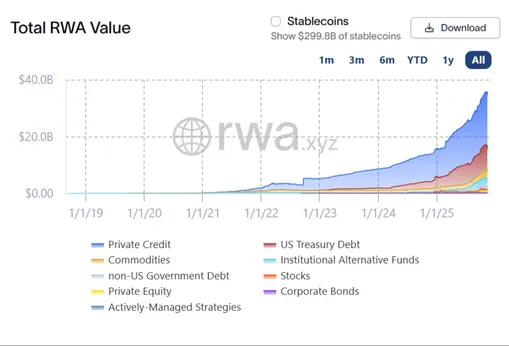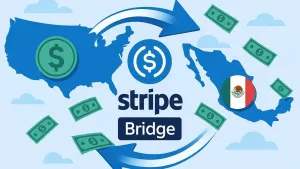BlackRock’s tokenised money-market vehicle, referred to as BUIDL, has reached approximately $2.5 billion in assets under management. The token represents shares in a money-market fund backed by cash, Treasury bills and other short-term instruments.
Recent developments show that Binance will now accept BUIDL as collateral, enabling institutional users of the exchange to use it in derivatives and borrowing operations.
This move comes as crypto-native and institutional investors increasingly look for yield-bearing digital assets beyond traditional stablecoins. BUIDL’s structure provides on-chain exposure to interest-bearing money-market instruments, a design that appeals to those seeking regulated asset exposure with blockchain and crypto-friendly settlement capabilities.
The Road To Tokenised Asset Adoption
BlackRock first launched its tokenised fund on a public-blockchain vehicle in 2024, partnering with Securitize to issue the fund’s tokenised shares.
Since then, the tokenization of traditional financial instruments, including money-market funds, Treasuries and bond-fund shares, has gained momentum. Data from RWA.xyz shows tokenised versions of real-world assets have grown substantially, with BlackRock’s BUIDL among the largest in the category.

By securing collateral acceptance from Binance, BlackRock bridges the gap between regulated institutional asset management and the crypto-exchange ecosystem. The design allows entities that operate in crypto-native trading environments to gain exposure to a regulated product backed by traditional finance.
Why The Development Is Interesting
For institutional investors, BUIDL offers access to yield-bearing assets in a token form that can be used as collateral, settled on-chain and potentially integrated into 24/7 trading environments. This contrasts with conventional money-market funds, which settle and trade during business days and rely on legacy infrastructure.
From the crypto-exchange side, Binance’s acceptance signals a growing alignment between regulated traditional assets and crypto-friendly platforms. If a major asset manager such as BlackRock trusts the tokenised structure, it may encourage other large players to enter the space.
Welcome @BlackRock to @BNBChain and @Binance.
— CZ 🔶 BNB (@cz_binance) November 14, 2025
BlackRock has $13 trillion AUM (assets under management). https://t.co/eeG2DzRKmM
At the same time, this development raises issues around regulation, oversight and transparency. Tokenised assets remain under-explored in many jurisdictions, and institutional investors will monitor how custody, audit and valuation practices evolve.
Path Ahead For Tokenised Funds
The immediate next phase will include how quickly BUIDL is used as collateral, which clients participate and how this use affects liquidity and collateral markets in crypto derivatives. Observers will also watch for BlackRock’s next tokenisation steps, whether tokenised ETFs and other assets follow, and how exchanges respond.
In broader terms, this may mark a turning point where real-world assets, tokenised by major asset managers, enter the crypto-ecosystem not only as investment vehicles but as collateral and transactional instruments in blockchain-based finance.






